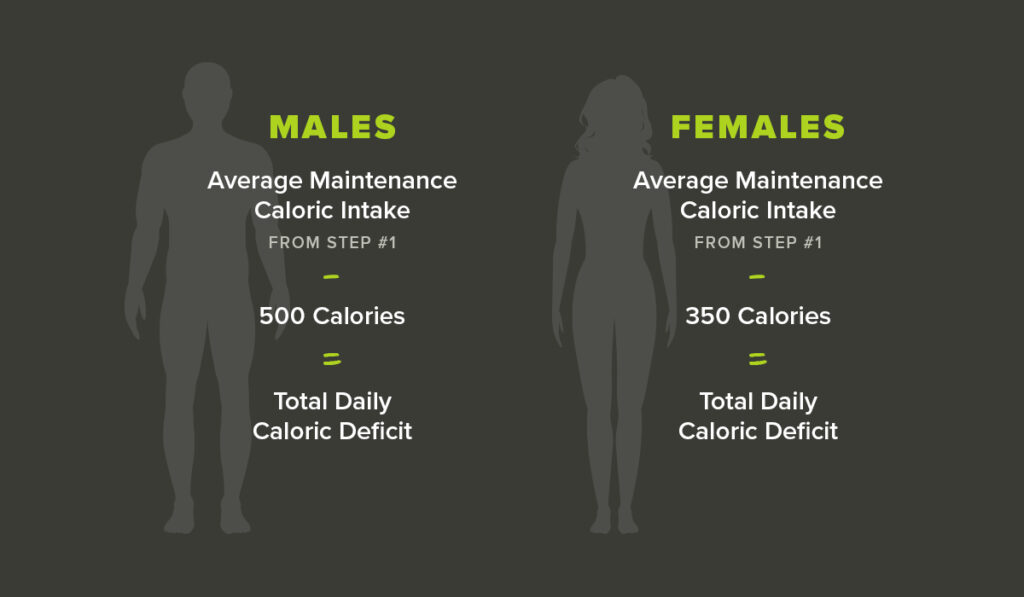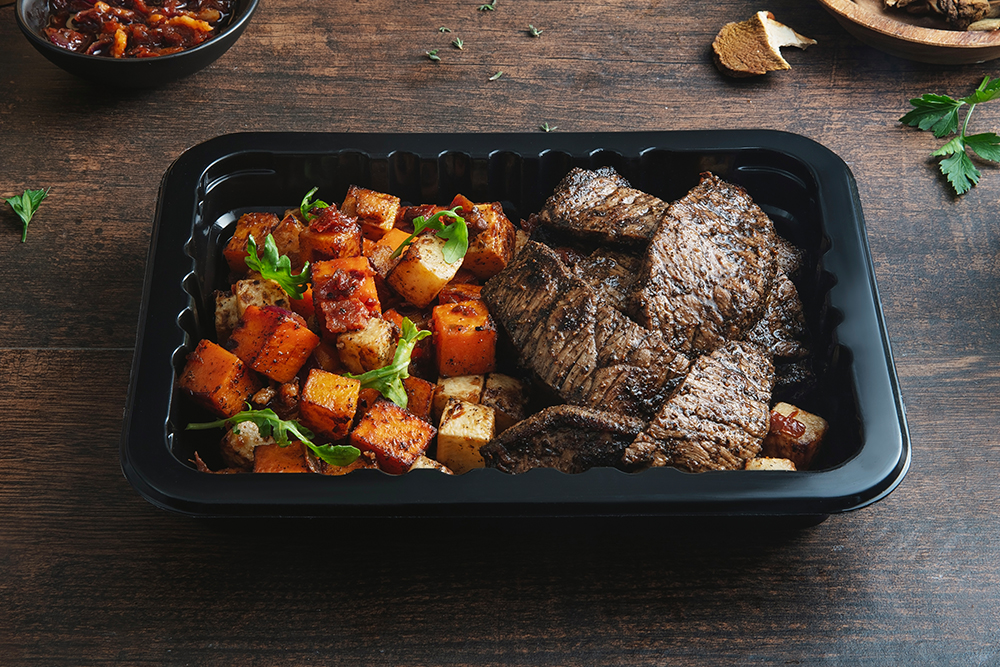When aiming to lose weight, it’s crucial to focus on fat loss rather than just overall body weight. Opting for fat loss is key to achieving better health outcomes and improving body composition. By adopting targeted practices in your weight loss approach, you can predominantly reduce fat while preserving lean muscle mass. Sustainability is critical in this process. Let’s explore strategies for achieving sustainable fat loss and establish a timeline for doing so effectively.

Step 1: Determine Your Actual Maintenance Needs.
To determine your body’s daily caloric requirements, various online calculators and equations consider factors such as height, weight, gender, and age, and sometimes body fat percentage. However, they often overlook metabolic adaptation. This occurs when your metabolism adjusts to previous calorie deficits.
To account for this, it’s essential to track your actual food and beverage intake for a week before starting any fat loss regimen. Use an app or notepad to record daily consumption. At the end of the week, total the calories and divide by seven to find your average daily intake. This average represents your baseline “maintenance caloric intake.”
Timeline: 7 days

Step 2: Lower Insulin Levels.
To achieve sustainable fat loss, the first step is to reduce insulin levels. Lowering insulin is crucial for shrinking fat cells effectively. Many people mistakenly create a caloric deficit right away, which can be counterproductive without first lowering insulin levels. Testing your fasting insulin can provide insight into your starting point; ideally, levels should be between 2-6 for optimal fat loss. To lower insulin, focus on improving blood sugar control and uptake. Emphasize high-protein foods, non-starchy vegetables, and healthy fats like omega-3s and monounsaturated fats.
Meals such as our Basil Parmesan Chicken with Roasted Cauliflower and Broccoli Florets or our Japanese Steak and Hibachi Vegetables are recommended.
Incorporate full-body compound resistance training 3-4 days per week and low-intensity walks on other days. Increase daily walking, especially after meals. During this phase, the goal isn’t to create a caloric deficit but rather to eat and exercise to lower insulin levels, leading to gradual weight loss.
Timeline: 30 days

Step 3: Establish A Caloric Deficit.
With insulin levels now lowered, it’s time to create a caloric deficit using the strategies mentioned earlier. Begin by implementing the average daily maintenance caloric intake determined in Step 1. For men, subtract 500 calories from this figure; for women, subtract 350 calories to establish your total daily caloric deficit intake.
Next, calculate your daily macronutrient goals. Maintain high protein intake to preserve lean muscle mass, curb hunger, and sustain low insulin levels. Aim for 0.8 – 1.0 gram of protein per pound of body weight; for instance, if you weigh 150 pounds, target between 120 – 150 grams of protein daily. Divide the remaining calories in half. Determine your fat intake by dividing half of these calories by 9 to find your daily fat gram goal. Divide the other half of the calories by 4 to establish your daily carbohydrate gram target.
Adjust your fat and carbohydrate grams based on personal medical history; for example, those with thyroid conditions might benefit from more carbohydrates, while individuals with metabolic syndrome might find higher fat intake more beneficial.
Timeline: 3-6 months

Step 4: Implement Refeeds.
Refeeds can help prevent weight loss stalls and support hormone balance. During prolonged caloric deficits, leptin and thyroid hormone levels drop while cortisol levels rise. Leptin, a fuel gauge hormone, increases hunger and cravings when low. Altered thyroid and cortisol levels can lead to weight plateaus and slight weight regain. Implement refeeds every 1-2 weeks, starting at week 4 of your caloric deficit.
Perform refeeds on resistance training days for optimal insulin sensitivity. To do this, double your complex carbohydrate intake without changing protein or fat intake. For example, choose our Grass-Fed Beef Bolognese and Penne Pasta instead of Herb Roasted Chicken and Cheesy Broccoli Pilaf for a higher complex carbohydrate meal. Increase your total daily carbohydrate intake by 75-100 grams on refeed days, then return to your normal diet the next day. This should reduce hunger and may even lower the number on the scale in the following days.
Timeline: 1 day

Step 5: Determine The End Point.
Being in a caloric deficit is challenging for both body and mind. It’s generally advisable not to stay in a deficit for more than six months before restoring caloric intake, although some may benefit from shorter periods, such as three months. Signs that it’s time to restore calories include hair loss, delayed nail growth, difficulty sleeping, constant hunger, decreased gym performance, frequent injuries, irregular periods, low libido, and dry skin.
If you experience these symptoms, gradually increase your caloric intake by about 100 calories per week until you reach maintenance levels. Add these calories from fats and carbohydrates, not protein, as protein intake should already be high and doesn’t have the same hormonal effects. Your weight should remain stable with these gradual increases, but if it changes, slow the increases to every two or three weeks. It typically takes about eight weeks to fully restore your caloric intake and metabolic rate.
Timeline: about 8 weeks

In Summary
You now have a sustainable plan for achieving fat loss while maintaining lean muscle mass. This plan can be used for every weight loss journey you undertake. We are here to support you with our stress-free, ready-made meals delivered nationwide.
About the Author
Lauren Papanos is a licensed registered dietitian nutritionist and nutrition researcher, published in the Journal of Women’s Sports Medicine. She holds her bachelor’s and master’s degrees in nutrition sciences, board certification in sports nutrition as well as advanced certifications in functional medicine and functional endocrinology. She is the owner of the private practice, Functional Fueling Nutrition where they specialize in working with active women and athletes with thyroid diseases and endocrine and metabolic conditions. Lauren has been featured on national television and in Forbes, Shape and Insider. She is the host of the Strength in Hormones Podcast. You can find Lauren on Instagram at functional.fueling and learn more about her practice at www.functionalfueling.com.






